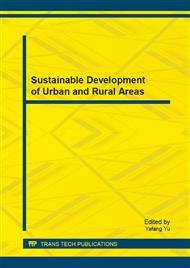[1]
J.L. Campos et al: Bioresource Technology. Vol. 100 (2009), p.1069.
Google Scholar
[2]
V.K. Tyagi, S. -L. Lo: Renewable and Sustainable Energy Reviews. Vol. 25 (2013), p.709.
Google Scholar
[3]
P. Manara, A. Zabaniotou: Renewable and Sustainable Energy Reviews. Vol. 16 (2012), p.2568.
Google Scholar
[4]
P. Manara, A. Zabaniotou: Renewable and Sustainable Energy Reviews. Vol. 16 (2012), p.2569.
Google Scholar
[5]
Den Xiao-lin, Wang Guo-hua, Ren que-yun: China Water & Wastewater. Vol. 16 (2000), p.19.
Google Scholar
[6]
Y. Cao, A. Pawłowski: Renewable and Sustainable Energy Reviews. Vol. 16(2012), p.1658.
Google Scholar
[7]
V.K. Tyagi, S. -L. Lo: Renewable and Sustainable Energy Reviews. Vol. 25 (2013), p.712.
Google Scholar
[8]
Menéndez JA, Inguanzo M, Pis JJ: Water Res. Vol. 36 (2002), p.3261.
Google Scholar
[9]
D. Fytili, A. Zabaniotou: Renewable and Sustainable Energy Reviews. Vol. 12 (2008), p.127.
Google Scholar
[10]
I. Fonts et al: Renewable and Sustainable Energy Reviews. Vol. 16 (2012), p.2784.
Google Scholar
[11]
Bridgwater AV, Meier D, Radlein D: Organic Geochemistry. Vol. 30 (1999), p.1481.
Google Scholar
[12]
T.W. Marrero et al.: Waste Management. Vol. 24 (2004), p.193.
Google Scholar
[13]
D. Fytili, A. Zabaniotou: Renewable and Sustainable Energy Reviews. Vol. 12 (2008), p.130.
Google Scholar
[14]
Hamiltom CJ: Water Environ Manage. Vol. 14 (2000), p.89.
Google Scholar
[15]
Dentel SK, Strogen B, Chiu P: Water Science and Technology. Vol. 50(2004), p.161.
Google Scholar
[16]
Liu, Z., Li, X., Jia, B., Zheng, Y., Fang, L., Yang, Q., Wang: Vol. 60 (2009), p.2399.
Google Scholar
[17]
Jiang YM, Chen YG, Zheng X: Environ. Sci. and Technol. Vol. 43(2009), p.7734.
Google Scholar
[18]
Jiang JQ, Zhao QL, Zhang JN, et al.: Bioresource Technology. Vol. 100 (2009), p.5808.
Google Scholar
[19]
Liu, H., S., Logan, B. EW.: Environ. Sci. Technol. Vol. 39 (2005), p.4317.
Google Scholar
[20]
Wenzong Liu, Shihching Huang, Aijuan Zhou, Guangyu Zhou, Nanqi Ren: international journal of hydrogen energy. Vol. 37 (2012), P. 13860.
Google Scholar
[21]
Tingting WU, Gefu ZHU, Ran ZOU: CHEMICAL INDUSTRY AND ENGINEERING PROGRESS. Vol. 32 (2013), p.1435.
Google Scholar
[22]
Lu Lu, Defeng Xing, Bingfeng Liu, Nanqi Ren: water research. Vol. 46 (2012), p.1016.
Google Scholar
[23]
Tingting Wu, Gefu Zhu, A jay Kumar Jha, Ran Zou, Lin Liu: international journal of hydrog en energy. Vol. 38 (2013), p.11118.
Google Scholar


